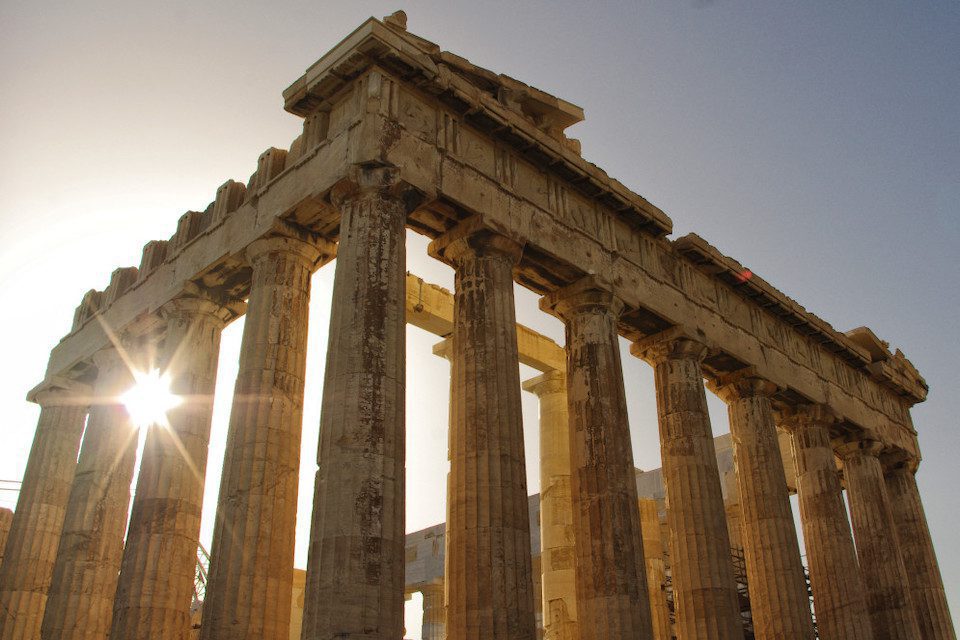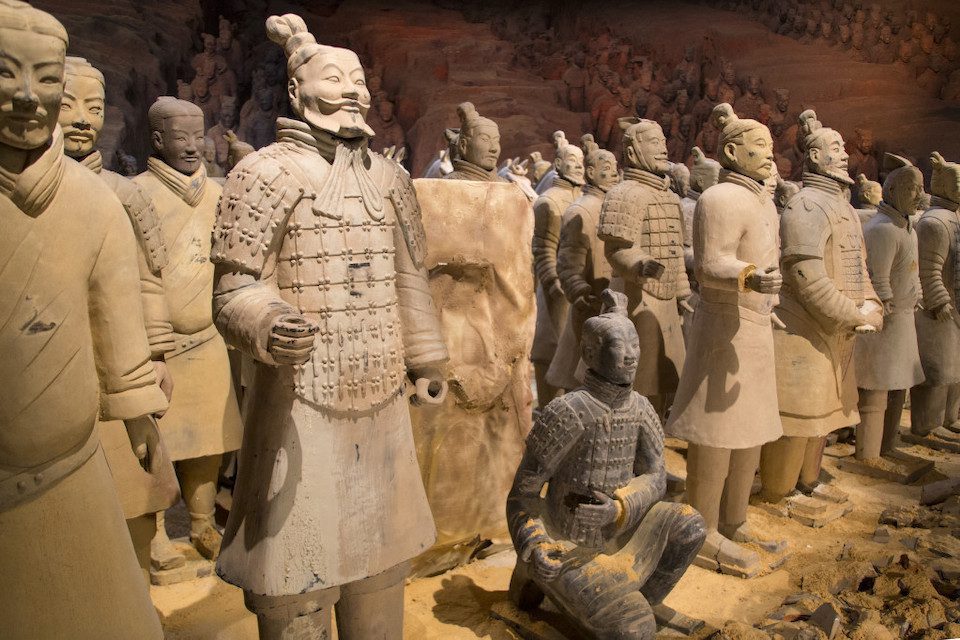Last updated on January 8th, 2025
Featured image: We round up the Top 10 UNESCO World Heritage Sites
As Recommended by JourneyWomen
by Amanda Burgess
Our cultural and natural heritage are nationless and borderless, according to the United Nations Educational, Scientific and Cultural Organization (UNESCO), which encourages the identification, protection and preservation of sites considered to be of outstanding value to humanity. World Heritage Sites belong to every human on earth, regardless of the territory on which they stand.
In our recent ‘ Travel Dreams’ survey, you told us which UNESCO World Heritage Sites top your must-see list. Below, we present the Top 10 travel-worthy heritage sites as selected by JourneyWomen, with a sampling of what makes each one unique.
1. Go the way of the gods at the Acropolis in Athens
Athens, Greece
An ancient citadel perched on a craggy limestone hill rising high above the city of Athens, the Acropolis is a Greek ode to philosophy and the arts, and was designated a UNESCO World Heritage Site in 1987. The term acropolis itself means upper city. Fortresses given a boost by nature, the city states of ancient Greece were built on hills to offer inhabitants and sacred buildings protection in times of war and invasion. For centuries, the Acropolis has withstood massive earthquakes and vandalism, serving as a home to kings, the mythical home of the Greek gods, and a place of worship. Built in just 50 years through the manpower of thousands of labourers and artists, the site’s most celebrated structures – the Parthenon, the Erechtheion temple, the Propylaea gate, and the Temple of Athena Nike – make visitors feel as though they walk among the gods.

2. Marvel at the mysteries of the Egyptian Pyramids
Memphis, Egypt
Shrouded in mystery and wonder, the Egyptian pyramids have taken centuries to reveal even a portion of their secrets. They’ve been proven to be some of the most indestructible pieces of architecture ever built, and yet they were constructed by human hands without the aid of modern machinery. The average weight of the Great Pyramid’s 2.3 million stone blocks is 2.5 tonnes, with several clocking in at over 70 tonnes. To put that in perspective: That’s about 10 times as heavy as a Tyrannosaurus rex! The Great Pyramid is also a smart building – acting as a massive sundial also able to signal solstices and equinoxes. Little can top the cognitively dissonant feeling of standing in the shifting sands of the Sahara Desert staring up at these massive and immoveable stone structures.
Read one JourneyWoman’s story about shattering her fears in one of Egypt’s pyramids in this collection of curiosity stories.

3. Explore the Lost City of Petra
Hashemite Kingdom, Jordan
An ancient city that is half-built, half carved into rock, Petra was established in 312 BC and is known as the Lost City, discovered in 1812 by Swiss explorer Johann Ludwig Burckhardt. To enter Petra, travellers must traverse a narrow, 1km-long gorge called the Siq that is bound by 8-metres high cliffs on each side. History buffs and fans of Indiana Jones and the Last Crusade have been drawn to this UNESCO World Heritage Site (designated in 1985) for decades, with the film amplifying awareness and tourism alike. It was also named one of the New Seven Wonders of the World in 2007. Adventurers thirsting for a firsthand encounter with a preserved ancient city in an exotic locale can’t go wrong with a trip to Petra, home to 1,000 tombs and sacred spaces built to align to solar patterns (the Nabataeans who called the city home worshiped the sun as a source of light and life).
Discover things every woman should know before visiting Jordan.

4. Walk through time along The Great Wall of China
Beijing, China
Designated as a UNESCO World Heritage Site in 1987, The Great Wall of China is the world’s longest wall and largest ancient architecture. It stretches back through time more than 2,300 years, crosses nine provinces, and officially runs more than 21,196.18 km (13,170.7 mi). While it can’t be viewed from space by the naked eye as some believe, that doesn’t detract from its sheer magnitude and awe-inspiring wonder. Nothing can prepare you for the groundswell of emotions that stem from hiking a near-empty portion of it, with wall stretching out as far as the eye can see. You simultaneously feel woefully alone and deeply connected to all of the humans who came before you – both insignificant and powerful. Winds whistle against its stones as they have for millennia, bringing whispers of the past to you. The experience of walking in the footsteps of history changes you.

5. Gaze with wonder upon a palatial mausoleum inspired by love at the Taj Mahal
Agra, India
Named a UNESCO World Heritage Site in 1982, the white marble marvel of the Taj Mahal was built as a lasting testament to the love of the Shah Jahan for his third wife and first love, Mumtaz Mahal, who died at 40 while birthing their 14th child. Construction of the mausoleum began in 1632 and took around 22 years to complete (Side Note: It took a filmmaker from Bangladesh five years and US$56 million to build a replica of the Taj Mahal using modern equipment). This monument to love was built to last (despite growing concerns over its structural integrity): The four towers surrounding the palace were designed so that in the event of a collapse, everything would fall away from the crypt where Shah Jahan’s wife (and later the Shah himself) was laid to rest. Known in Arabic as the Crown of Palaces, this architectural wonder is a jewel of Islamic art in a predominantly Hindu nation.
Read these tips about travelling through Northern India before you go.

6. Traverse centuries of Ancient Puebloan history at Mesa Verde National Park
Near Cortez, Colorado
Established as a 212-square kilometre (82-square mile) US National Park in 1906 to preserve its prehistoric cliff dwellings, Colorado’s Mesa Verde is the largest and best-preserved Ancestral Puebloan archaeological sites in the US – boasting over 5,000 sites and 600 cliff dwellings. It’s the only national park in the US that was created to protect cultural and historical sites versus natural landscapes, but one of many that have been named UNESCO World Heritage Sites (Mesa Verde in 1978). Imaginative travellers wanting a window onto the world of the ancient Pueblo people, who made this area their home from 500 AD to 1300 AD, can explore the 700-year-old Cliff Palace, the park’s best-known cliff dwelling. Built of sandstone, wooden beams and mortar, the 150-room structure once housed 125 pueblos and was part of a community of 600 or more. Beyond delving into human history, park visitors can also enjoy hiking, camping and wildlife watching – the park is inhabited by elk, bears, mountain lions, snakes, lizards, and rare creatures such as the Mexican spotted owl, the peregrine falcon, the Albert’s squirrel, the Colorado pike-minnow and the Mesa Verde tiger beetle.

7. Ignite your inner archaeologist at Angkor Wat
Siem Reap, Cambodia
There’s little like the well-appointed ruin of an ancient civilization to spark the imagination of history-loving travellers. The temple of Angkor Wat – constructed between 1113 AD and 1150 AD) and sprawling 200 hectares (500 acres) – is one of the world’s oldest religious monuments, and by far the largest. A symbol of pride for Cambodians, the ancient monument has graced the country’s flag since 1850, acts as a key driver of tourism, and receives over 2 million visitors annually as a UNESCO World Heritage Sites. Travellers who chase spectacular sunrises and sunsets the world over have a bucket list opportunity awaiting them at Angkor Wat: Astronomy heavily influenced the complex’s architecture, and the temple boasts an observation area to sungaze and moongaze.

8. Behold the Terracotta Army crafted to lead an Emperor into the afterlife
Xi’an, China
Imagine being a 13-year-old Emperor ascending the Chinese throne. How do you make your mark? In 246 BC, Qin Shi Huang ordered construction of the Terracotta Army, the world’s largest ancient imperial tomb complex, as his afterlife army. So far, over 8,000 life-size soldier statues, 130 chariots, and 670 horses have been uncovered at the site. Marvels of craftsmanship, each statue stands at 175-190 cm tall, all with different poses and facial expressions. It took more than 700,000 labourers 40 years to construct the army and mausoleum, with the ambitious project finishing four years after the Emperor’s death. The sands of time buried the site for over 2,200 years, accidentally discovered by Chinese farmers digging a well in 1974. It was declared a UNESCO World Heritage Site in 1987. The most thrilling part of planning a visit for those enthralled by the artifacts of ancient civilizations: The army is but one small section of the site, which covers almost 56 square kilometres. Who knows what ongoing excavation and restoration will unearth in years to come?

9. Discover the mystery and magic of the Rapa Nui peoples on Easter Island
Rapa Nui National Park, Easter Island
The world’s most secluded inhabited island, located a five-hour flight from Santiago, Chile and a seven-hour flight from Tahiti, Easter Island is encircled by the world’s clearest ocean waters – transparent to a depth of 50 to 60 metres – making it a diver’s dream. This UNESCO World Heritage Site (declared in 1995) is home to the moai, massive stone sculptures that face inward from the coastline as a symbol of protection. While once thought to be a grouping of heads, the sculptures have full bodies buried beneath the ground, as archaeologists discovered in 1914. Imagine the magnitude of being a human living on an island filled with thousands of moai representing your ancestors. Civil war among the Rapa Nui people and theft reduced the moai population, but the impact of the statues – the largest of which can be seen from Google Earth – on the traveller is breathtaking.

10. Ethiopian Rock Hewn Churches
Lalibela, Ethiopia
While most of the world’s greatest temples tower towards the heavens, the comparatively modest churches of northern Ethiopian city Lalibela are carved from the living rock, plunging 40 to 50 metres into the ground. There are 11 monolithic churches scattered around the historical site, each dating back to the 12th and 13th centuries and carved from a single stone. They are attributed to King Lalibela, who had a vision to build a New Jerusalem. Stories of the churches’ creation are shrouded in legend – one of which claims that human labourers worked during the day, with angels taking the night shift and speeding up the constructions. Connected by underground tunnels and trenches, the rock-hewn churches are marked with chiselled openings in the shape of crosses to allow sunlight to bless their interiors.

What other UNESCO World Heritage Sites are on your must-visit list? Share them with us in the comments below!
Methodology: Initial recommendations for this survey were gathered on our private Facebook Group and prioritized through an online survey to our entire mailing list of 55,000 women between May 5 -15, 2021.
More Off-the-Beaten-Path Destinations to Discover
Where to Travel in 2025: The Best Places for Solo Women Travellers Over 50
Wondering where to go solo in 2025? We’ve applied our own criteria to 10 places that inspire travel and discovery for solo women travellers.
Swimming with Whale Sharks in Mexico’s Galapagos: Adventures in La Paz, Baja California Sur
A once-in-a-lifetime experience swimming with whale sharks in La Paz, Mexico, reminds us to trust ourselves and the universe.
Delft, The Netherlands: A Charming City of Vermeer, Ceramics and Cafes
Known as the birthplace of Vermeer, Delft is a smaller, lesser-touristy version of Amsterdam, with scenic canals, ceramics and cafes.








I think Chaco Culture National Historical Park is just as interesting as Mesa Verde, but it’s more remote and harder to get to, and you have to camp out and reserve a campsite ahead of time because there’s literally nowhere else to stay within a one-hour drive. Still, it is SO worth it to see the sky at night, and Pueblo Bonito will blow your mind.
Greetings from Pakistan.
I am from Pakistan Tourism. I appreciate your great efforts for introducing UNESCO world heritage sites. Ancient Pakistan is very rich in its historical background. MOHANJODARO and TAXILA Both sites are strongly recommended as a UNESCO world heritage sites in Pakistan.
Loved Vijayanagar, the City of Victory, in Karnataka State, central India. A sophisticated city and trading center in medieval India from approximately 1300-1500 and then leveled by conquerers, the site contains temples, bazaars, an elephant stable, Shiva Linda’s, all in an area of giant boulders. Fascinating.
I absolutely love your postings / emails. Thank you!!!!!
All of these UNESCO sites are incredible. I used to discover that a site had a UNESCO designation while I was traveling (or even after the fact), but now I research that in advance to make sure that I don’t miss out on a key piece of historical/cultural/architectural significance!